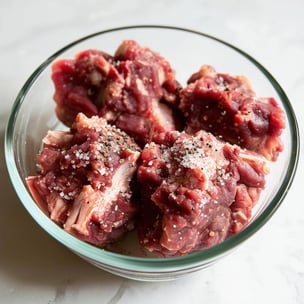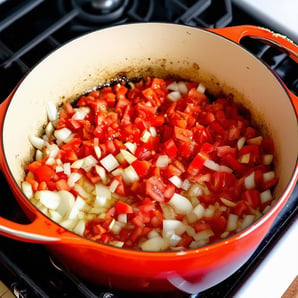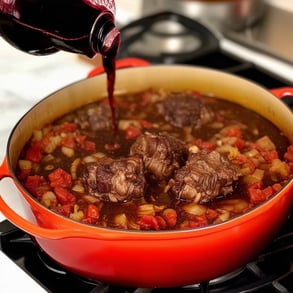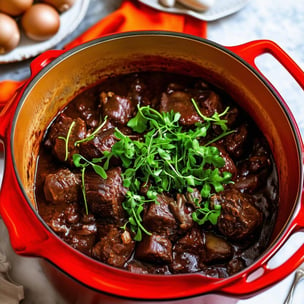Brazilian Rabada Recipe:
A Rich and Hearty Oxtail Stew

Brazilian cuisine is known for its bold flavors, slow-cooked dishes, and comforting stews. One of the most beloved traditional recipes is rabada, a luscious and deeply flavorful oxtail stew that highlights the richness of well-seasoned, fall-off-the-bone meat. This dish is slow-braised with tomatoes, onions, garlic, and spices, creating a thick and savory broth that pairs perfectly with creamy polenta or white rice.
Rabada has its roots in Portuguese and African influences, blending the best of both culinary traditions into a dish that is both rustic and sophisticated. Whether served at a family gathering or a special occasion, this stew is a true testament to the warmth and depth of Brazilian home cooking.
Why Slow Cooking Elevates Rabada
Rabada is a prime example of Brazil’s love for slow-cooked meals, where tough cuts of meat are transformed into tender, flavorful masterpieces. This cooking technique not only enhances the taste but also ensures that every bite is infused with rich, aromatic flavors.
Across Brazil, rabada varies slightly in preparation. Some regions add watercress for a fresh, peppery contrast, while others incorporate cassava for a heartier version. Regardless of the variation, one thing remains constant: the slow braising process, which allows the oxtail to become irresistibly tender and deeply infused with spices and herbs.
Key Ingredients and Flavors in Rabada
1. Oxtail: The star of the dish, oxtail is rich in collagen and marrow, which creates a luxurious broth as it cooks.
2. Tomatoes and Onions: These ingredients provide the stew with a natural sweetness and depth of flavor.
3. Garlic and Bay Leaves: Essential aromatics that build the stew’s robust and earthy base.
4. Garlic and Onion: These ingredients form the flavorful base, infusing the stew with rich, savory notes.
5. Red wine: Helps tenderize the meat and adds a subtle acidity to balance the richness.
6. Watercress (optional): A common addition that provides a fresh contrast to the hearty stew.
7. Polenta or Rice: Traditional accompaniments that absorb the flavorful sauce, making every bite satisfying.
Instructions:
1. Prepare the oxtail: Trim any excess fat for a lighter stew. Rinse and pat dry the oxtail pieces. Season generously with salt, black pepper, and freshly squeezed lime juice.

2. Sear the meat: In a large Dutch oven or heavy-bottomed pot, heat some oil over medium-high heat. Sear the oxtail on all sides until browned. Remove and set aside.

3. Sautée the Aromatics: In the same pot, sauté onions and garlic until softened. Stir in tomatoes and cook until they break down into a thick sauce.

4. Braise the stew: Return the oxtail to the pot, add bay leaves, and pour in wine and beef broth to cover the meat. Add salt and black pepper to taste. Cover and place in pre-heated oven (350F/ 180C) for about 3 to 4 hours until the meat is tender and falling off the bone.

5. Final Touches: If using, add watercress to the top of the stew for added freshness.

Why You’ll Love Rabada
Rabada is the perfect combination of comfort and depth, with a slow-cooked richness that makes it an unforgettable dish. The gelatinous texture of oxtail creates a silky, full-bodied broth, while the balance of acidity and aromatics makes every bite satisfying.
This dish is ideal for cozy family dinners, special gatherings, or anyone who loves slow-cooked stews bursting with robust flavor. While rabada requires patience, the result is more than worth the wait. Pair it with a glass of red wine, and you’ll have a meal that feels both indulgent and deeply nourishing.
Have you tried making rabada? Share your experience in the comments below!














